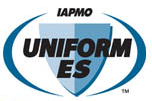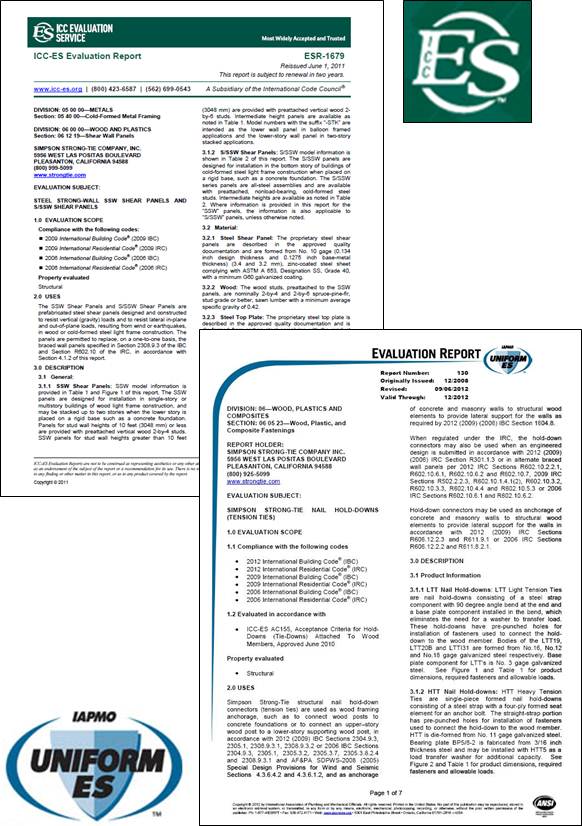Woodworks invited me to do a presentation on Testing and Evaluation of Products for Wood-framed Construction, and I found you can’t really talk about testing without talking about the test standards and criteria used in product evaluations. Usually the goal in testing to these standards is to show compliance with the intent of the building code and have the product listed in a code report.
Why not just follow the code?
Innovative architectural and structural building products not addressed by the building code are in every building. Revisions to the building code are considered on a three-year cycle and some standards are on a five-year cycle. Sometimes it may take several cycles to address a new building product.
Waiting three-plus years or more for a new product or technology to be addressed in the code is not realistic, so IBC® Section 104.11 permits products not specified by code if reviewed and approved by the building official. Research reports may be submitted and tests performed as part of the substantiation. Evaluation reports, which follow specific test standards and requirements, were developed to assist building officials in product approvals.
Who issues evaluation reports?
Product certification entities play a very important role in the building industry as they provide an independent third party review of architectural and structural products based on publicly developed criteria to assist the product users and code enforcement in determining if the product meets the intent of the code. The most prominent architectural and structural building product certification companies are ICC Evaluation Service (ICC-ES) and IAPMO Uniform Evaluation Service (IAPMO UES) which are both ANSI-accredited to ISO Guide 65 “General Requirements for Bodies Operating Product Certification Systems” as product certification entities. Their certifications are found on ANSI’s website.
Both ICC-ES and IAPMO UES have processes in which they solicit public and expert opinion in their development of acceptance or evaluation criteria used to evaluate a building product. Typically this publicly developed product evaluation criteria addresses the requirements for testing, load determination, detailing, product limitations, inspections, and quality. Once the acceptance or evaluation criteria is completed, manufacturers submit accredited third party testing or accredited witnessed testing, analyses, and quality documentation to the product certification companies, who then review the data and perform inspections of the manufacturer’s facilities. ICC-ES and IAPMO UES often ask for the participation of all in the industry in their evaluation report process and their meeting dates and agendas are shown on their websites.
Are all reports the same?
It is important to remember that an evaluation report is not a product approval. Per the IBC, only the building official can approve a product, but they may use evaluation reports to assist them. Evaluation reports can vary by reviewing agency, and it is useful to run through this checklist in determining if an evaluation report is adequate:
- Is the product certification entity ANSI-accredited to perform building product certification?
- Is the product in the code report evaluated to the national code currently adopted by the jurisdiction?
- Is the product in the code report evaluated to a publicly developed acceptance or evaluation criteria?
- Does the code report specify the products load range, limitations, detailing requirements, and inspection requirements?
- Are the responsibilities of the designer, plan checker, and inspector clearly defined in the code report?
Answering no to any of these should raise concern and encourage more scrutiny of the report. In all cases, one should carefully review a code report to ensure a thorough understanding of the product, its uses and limitations.
The Structural Engineers Association of California Evaluation Reports Committee (SEAOC ERC) developed a white paper published in September 2011 titled, “An Evaluation of Current Practices Related to the Development and Implementation of Acceptance Criteria and Product Evaluation Reports,” which is a good source of information regarding the code report process and recommendations for improvement.
Code reports play a very important role in the construction industry by bringing innovative products to the marketplace sooner than otherwise would be possible. They can improve the safety of the built environment if the products in them are reviewed by competent reviewers in accordance with a publicly developed and available acceptance or evaluation criteria and if they are published by a ANSI-accredited product certification entity.
– Paul
What are your thoughts? Visit the blog and leave a comment!








The first task is to define failure.
It sounds like the wheel needs a little grease! That’s just silly.
Great Article. Thanks for the info. Does anyone know where I can find a
blank NC Insurance Uniform App to Participate as Healthcare
Practitioner?